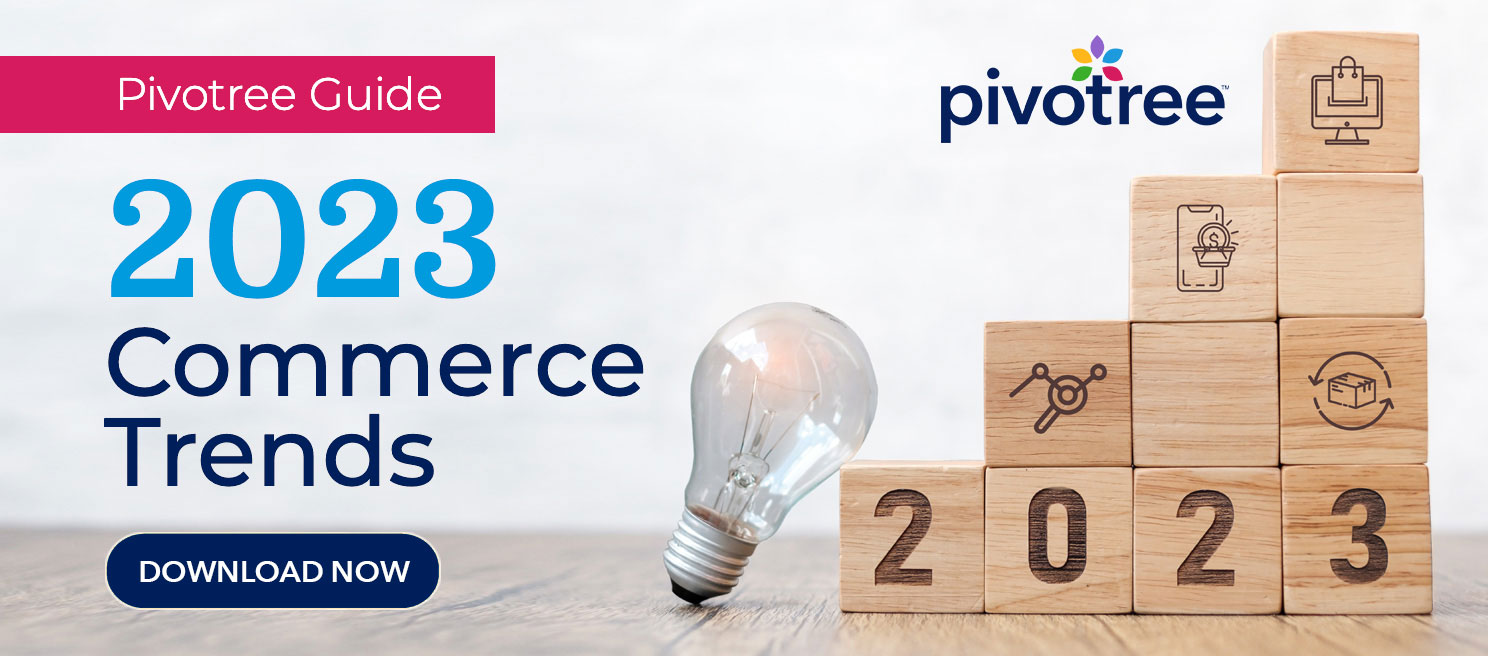How can you survive and thrive? In this blog post, we’ll explore the impact of inflation on digital commerce. We’ll also discuss a top strategy to help you push through the challenge and come out on top.
Get more insights on digital commerce trends in 2023. Download our comprehensive 2023 Commerce Trends Guide.
The impact of inflation on digital commerce
Inflation was oppressive in 2022, reaching a four-decade high in the US and impacting nearly every part of the world. But has it gotten better?
According to Laura Rosner-Warburton, senior economist at MacroPolicy Perspectives, “We’re certainly down from the peak of inflation pressures last year, but we’re lingering at an elevated rate. The road back to 2 percent is going to take some time.”
There’s definitely an uptick in optimism. The US economy showed signs of a rebound in February. However, prices continue to rise monthly across various goods and services — especially in categorie like grocery and housing. In PYMNTS’ latest “Consumer Inflation Sentiment” report, 41% of families with children and 42% of millennials say they’ve switched to lower-quality groceries to save money.
Despite changes in buying behavior, customer expectations remain high for a frictionless experience. Keynote Speaker and Author Shep Hyken recently noted:
“Frictionless is almost not noticed—until it is. At some point, customers realize how easy it is to do business with a company, and they like it. In fact, they like it so much, as the findings show, they will pay more and keep coming back.”
What keeps commerce leaders up at night?
On top of meeting consumer demands, inflation creates internal pressures. Most business leaders share the same anxieties, whether from big or small commerce companies. Their worries include:
● How can I keep prices low? My suppliers keep raising my costs, and it’s not sustainable to pass those price hikes on to my customers.
● How can I build loyalty? Customer acquisition costs keep rising, so I must appeal to my existing customer base.
● How can I automate more tasks? My team and resources are leaner than ever.
● How do I speed up profitability? I need to invest in technology this year, but my budget keeps shrinking.
Clearly, there’s a lot bubbling to the surface. To sum it up? Commerce leaders need ways to provide the experiences that consumers demand without overextending on cost.
How prepared is your business to survive and thrive?
In a recent survey by Pivotree and Canam Research, only 39% of commerce business leaders said their commerce strategy and tactics are “definitely keeping pace” with changes in customer behavior.
If that sounds familiar, what’s holding you back? For many, it’s an aversion to big-bang investments or lengthy, tedious implementations. And that makes total sense.
For example, let’s say you want to improve your supply chain operations and identify a warehouse management system (WMS) as your biggest gap. Here’s the problem: When you combine the traditional buy cycle and implementation time, most projects are years away from going live with the first warehouse. In the current market, we know that’s simply unacceptable.
So, how do you work around these limitations? Here’s our advice: Put the wheels in motion to make quicker buying decisions, go live with the basics, and leverage pre-defined models for incremental innovation.
In the next section, we’ll share how to accomplish this with a leading commerce strategy.
Survive and thrive: How to evolve from CAPEX to OPEX
During lean economic times, businesses must reduce costs and optimize their financial resources. One top strategy is shifting from a capital expenditure (CAPEX) model to an operational expenditure (OPEX) model.
The benefits of this approach for digital commerce include:
1. Predictable costs:With an OPEX model, businesses pay for services or resources as they use them. OPEX allows businesses to avoid costly and unpredictable capital expenditures, instead paying a regular subscription or usage fee that fits their budget.
2. Improved cash flow:Because OPEX doesn’t require a significant upfront investment, it can help businesses maintain cash flow during lean economic times. Businesses can redirect resources toward other pressing concerns or opportunities.
3. Agility:With an OPEX model, businesses can scale up or down as required. This flexibility is critical during lean economic times when businesses need to be agile to adapt to changing market conditions and consumer demands.
4. Access to the latest technology:OPEX allows businesses to stay current with the newest technology without an overwhelming capital investment. This is particularly important in rapidly evolving industries, where outdated technology or “tech debt” can quickly become a competitive disadvantage.
To transition to an OPEX model, consider focusing on incremental innovation. The goal is to implement the right technology at the right time while spreading out the cost.
Leverage “as a service” to open up new doors for your business
To apply incremental innovation, you can take advantage of an “as a service” model that’s opening up new doors in digital transformation.
This model is subscription-based and highly predictable. It allows you to add innovation incrementally, and with a gradual investment. Your ROI starts rolling in while the initial cost remains low. Each project takes a fast pace with an incremental investment — making it digestible even during times of economic instability.
Pivotree takes this approach forward by bringing commerce, supply chain, and data management under one umbrella. We help you target whatever service or technology will make the next greatest impact — whether that’s Commerce as a Service (CaaS), composable commerce, Data as a Service (DaaS), or supply chain innovation that leverages the MACH architecture (Microservices based, API-first, Cloud- native SaaS, Headless).
For example, let’s say you want to launch robotics in your warehouse. With our “as-a-service” model, you can get the operational excellence you need with our cloud-based WMS. Then, you could launch robotics or AI as a layer on top of your WMS. This incremental innovation helps you meet customer demand for fast delivery, optimize your inventory, and save costs — all within the framework of an OPEX model.
Thinking beyond inflation
Everyone expects 2023 to bring challenges. But what about all the opportunities? To help you find them,our digital commerce experts have put together the 2023 Commerce Trends Guide.
It covers some of the top trends for the year, with advice on how you can drive your business to thrive—not just survive—the turbulent times ahead.
We invite you to download your copy now.


